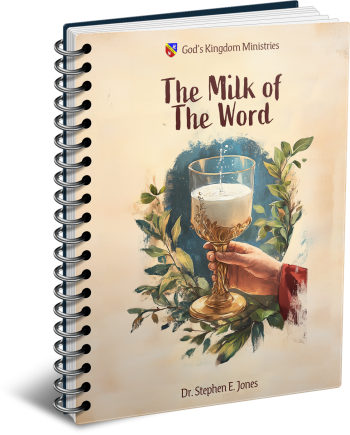Latest Posts
View the latest posts in an easy-to-read list format, with filtering options.

A detailed explanation of the foundations of the Christian faith that are mentioned briefly in Hebrews 6:1 and 2.
Category - General

Heb. 6:1 lists “repentance from dead works” as the first example of the milk of the word. Dead works are works that do not lead to life (salvation, immortality). From Paul’s perspective, dead works are the good works that men do with the hope that they will receive justification. From James’ perspective, dead works are works that do not give evidence of faith. Each view complements the other.
Dead works are not necessarily evil works. In fact, most of the time men are simply trying to obey the laws of God and to fulfill Israel’s vow of obedience through the Old Covenant (Exodus 19:8). The problem is that no one is capable of keeping that covenant. The danger is that if men know themselves and their condition since Adam they can often fall into despair, not knowing that the path to justification comes through faith in God’s vow (Rom. 4:21).
Worse yet, if men do not know of God’s New Covenant vow and yet are desperate to be righteous through their own works, they can become fanatical. We see this in the case of Paul himself who, in his earlier life, persecuted the church. Paul confesses in Gal. 1:13, 14,
13 For you have heard of my former manner of life in Judaism, how I used to persecute the church of God beyond measure and tried to destroy it; 14 and I was advancing in Judaism beyond many of my contemporaries among my countrymen, being more extremely zealous for my ancestral traditions.
It seems that Paul/Saul came to disagree with his teacher and mentor, Rabbi Gamaliel, who counseled the Sanhedrin in Acts 5:34-40 to let God handle the problem with this new teaching. The advice was good, but later we find Paul discarding Gamaliel’s advice, causing him to persecute the church. Old Covenant zeal can easily lead to fanaticism and even murder in the name of divine justice.
In later centuries we find the church also adopting murderous policies in the attempt to quell “heresies.” They thought that God had given them the responsibility to cleanse the church of all doctrines that the church councils, by a majority vote, had determined to be false. They too failed to follow Gamaliel’s godly advice. Was God indeed capable of fulfilling His own vow to make men His people and to be their God? Or did men need to help God by killing heretics?
This problem began when men failed to understand the difference between the two covenants. They failed to define faith in terms of “being fully assured that what God had promised, He was able also to perform” (Rom. 4:21). When we do not believe this, we tend to give God a helping hand, which inserts “dead works” into God’s promise.
Hence, “repentance from dead works” is a foundational teaching, called “milk” because it is something that must be taught to new believers. But even in the early church the author of Hebrews (Paul, I believe) complained that many believers needed to relearn “the elementary principles of the oracles of God” (Heb. 5:12). Not much has changed even today.
Before Jacob and Esau were born, God promised that “the older shall serve the younger” (Gen. 25:23). In other words, Jacob, who was born after Esau, was destined to receive the birthright. But when it appeared that Isaac was going to give Esau the blessing—contrary to the prophecy—Jacob and his mother set about to help God fulfill His promise. Jacob was a believer, and God often spoke to him and gave him revelation, but in his early life he did not understand that dead works do not add value to God’s promise. Yet at the same time God gradually brought Jacob to the place of genuine faith at a place called Peniel.
Peniel is where Jacob became Israel, moving from a mere believer to an overcomer. His wrestling match with the angel was pivotal in his life. I believe he thought he was wrestling Esau or one of his men until the angel did something supernatural. Then suddenly he realized that he had been fighting God. It was this revelation that transformed him into an Israelite.
So the next day when he met his brother Esau, Jacob told him, “I see your face as one sees the face of God” (Gen. 33:10). This was a direct reference to his experience at Peniel, which means “God’s Face.” He was able finally to see beyond Esau to the higher truth. Jacob was finally able to see God’s face (presence) in his greatest adversary. He finally knew the sovereignty of God, and his entire outlook on life was transformed.
In other words, Jacob turned around (repented) and began to walk in a new direction. He had gone from a reliance on “dead works,” based on the will of man, to a genuine faith that God was able to fulfill His promises without his help.
From there he went to Succoth, “booths,” which represents the feast of Tabernacles. The pattern set by Jacob illustrates for us the path to overcoming faith and seeing the fulfillment of Tabernacles in our lives.